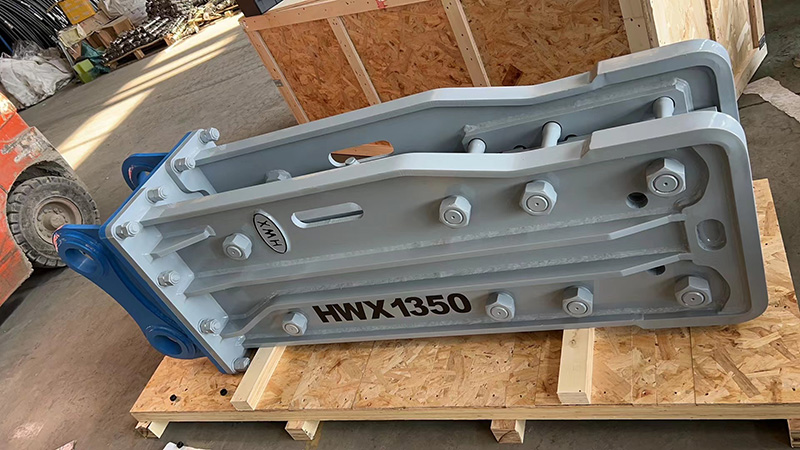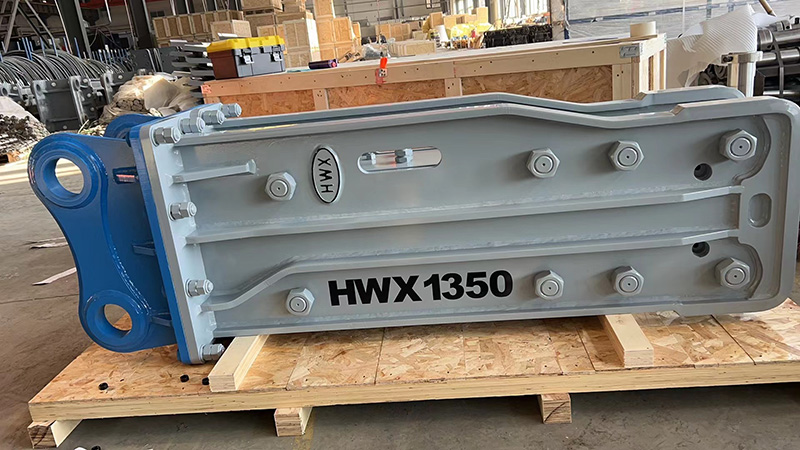Excavator hydraulic breaker hammers are usually classified according to the diameter of the hydraulic breaker chisel in the industry. The “68 hammer” we often hear refers to a breaker hammer with a hydraulic breaker diameter of 68 mm, while the “140 hammer” represents a breaker hammer with a breaker chisel diameter of 140 mm.
We need to further compare the pressure and flow required for the normal operation of the hydraulic breaker hammer with the corresponding parameters of the excavator hydraulic system. Only when the two match can we ensure safe use. It is very important to choose a matching hydraulic breaker hammer for operation according to the model of the excavator. If the selected breaker hammer is too large, it may lead to the situation of “a small horse pulling a big cart”, that is, the flow and pressure of the excavator hydraulic system cannot meet the normal working requirements of the breaker hammer. In this case, forced operation will not only damage the engine and hydraulic system, but also cause the breaker hammer to reduce the striking frequency or fail to strike normally, thereby seriously affecting the efficiency of the crushing operation. If the selected breaker hammer is too small, although it will not cause significant damage to the excavator itself, it will lead to reduced operating efficiency, which is not cost-effective from an economic perspective. At the same time, this may also cause a certain degree of damage to the breaker hammer. Therefore, it is recommended that when selecting a hydraulic breaker, you must match it within the appropriate range to ensure efficient and safe operation.



